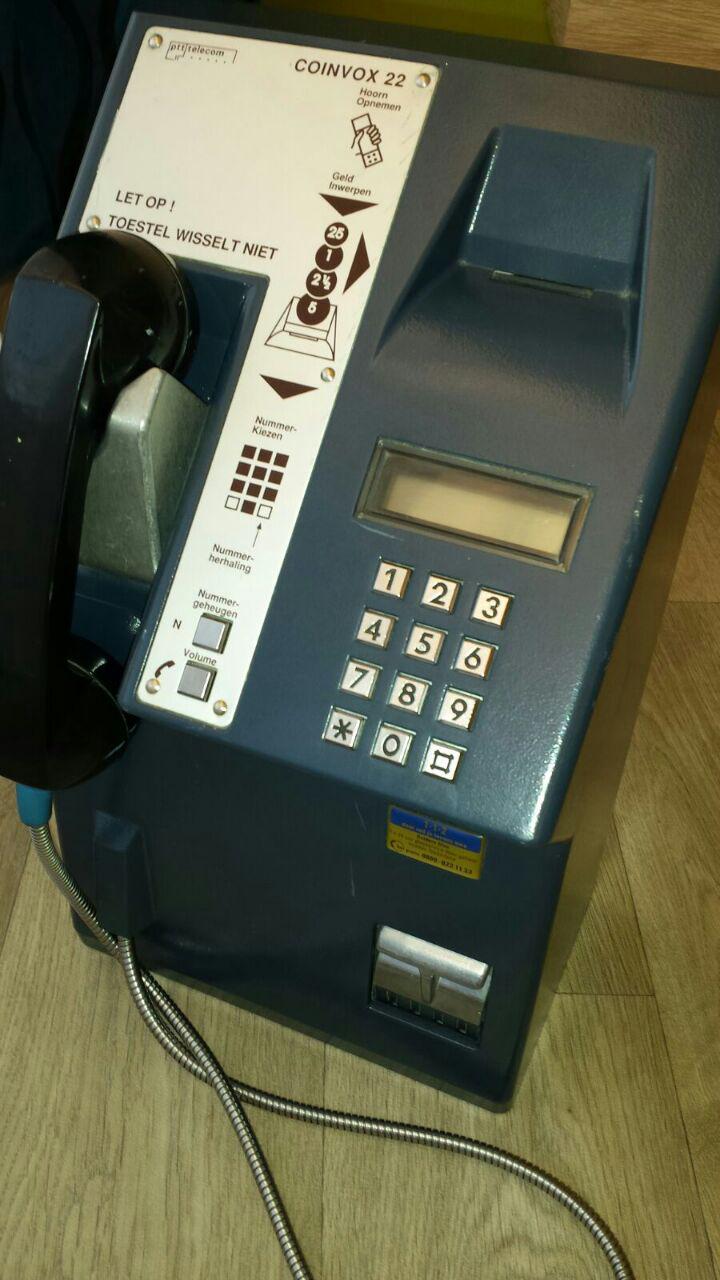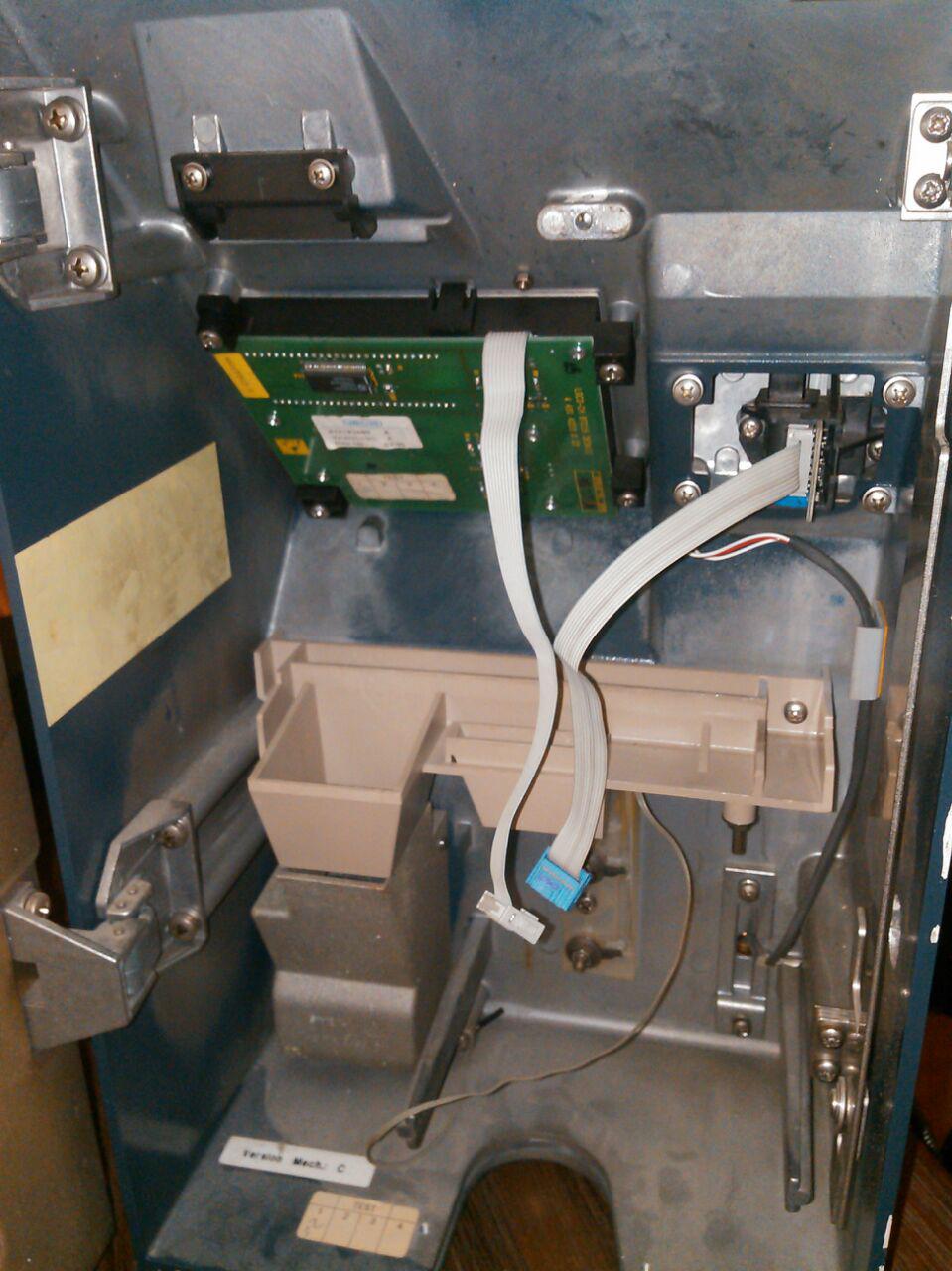Difference between revisions of "Coinvox 22"
(added snippets of information everywhere. added image. small typo fixes) |
m (typo fix) |
||
| Line 81: | Line 81: | ||
! col4 (P6) | ! col4 (P6) | ||
|- | |- | ||
| − | ! row1 ( | + | ! row1 (P0) |
| n/c | | n/c | ||
| {{k|1}} | | {{k|1}} | ||
Revision as of 12:48, 26 October 2015
| Project: Coinvox 22 | |
|---|---|
| Featured: | |
| State | Active |
| Members | xopr |
| GitHub | No GitHub project defined. Add your project here. |
| Description | Get an old payphone to work again |
| Picture | |
| No project picture! Fill in form Picture or Upload a jpeg here | |
synopsis
I got myself a Coinvox 22, reasonably cheap. The downside is: the inner workings have been stripped out, so it's just a metal box with keypad and display, a handset with hook-switch and a small transformer.
No coin mech, no ringer, no phone.
inside
handset / hook-switch
The handset is tested and is in good shape. It is connected to a PCB.
- 2 different reed switches
- 4 coils
- 2 3-pin SOT 23 (SMD) diodes(?) (D1, D2: A7 P 45)
J1 Handset connector. Layout is (male) PCB connector side.
|o spk |o| mic - |o| mic + |o spk
J2 Connector which ought to go into the main PCB. Layout is (female) connector side.
mic+ 2 |oo| 1 spk spk 4 |oo| 3 mic- NC1 6 |oo |5 n/c NO1 8 |oo| 7 P1 P2 10|oo| 9 NO2
Note: SW1 switches first (about 2mm) when hanging up, probably used for muting the microphone.
keypad / display
- IC2: PCF8576T (Universal LCD driver for low multiplex rates, I2C address 38h)
- IC3: PCF8574T (Remote 8-bit I/O expander for I2C-bus with interrupt)
- Addresses tied to ground; address 20h.
J Display/keypad connector. Layout is (female) connector side. Int needs pullup, and print is found working at 5V.
SCL 2 |oo| 1 SDA
4 |oo| 3
GND 6 |oo |5 VCC
8 |oo| 7
Int 10|oo| 9
Display
- 8 × 14 segment display, characters are filled from the right
- 52 pins with the only the outer 9 connected (36)
- uses 4 back-plane mode (all corners)
Segment layout. Note that bit 3 is not used, which aligns the characters to 16 bit.
15
_________
| \11 | / |
2| \ |7 /6 |14
| \ | / |
10---- -----5
| / | \ |
1| / | \4 |13
| /9 |8 \ |
__________
0 o12
bit 3: not used
Keypad
| col1 (P7) | col2 (P4) | col3 (P5) | col4 (P6) | |
|---|---|---|---|---|
| row1 (P0) | n/c | 1 | 2 | 3 |
| row2 (P1) | n/c | 4 | 5 | 6 |
| row3 (P2) | N | 7 | 8 | 9 |
| row4 (P3) | Vol | * | 0 | # |
To read out the keypad (on interrupt pullup), set one row low and read the column nibble. Repeat for each row. Low bit means key pressed.
Text on the PCB:
- LGCO-CH BTC15 DESKII
- 4 431 4223 0 22
Text found on some stickers:
- Landis & GYR
- 412197580 A
- Version.mec: A
- Date fab : 02/95
plans
- upload reference material of the Coinvox phones (hacktic, 't klaphek, telephone museums ([1][2][3][4][5][6][7])
- experiment with my (front fed) coin mech (or look for a top fed mech that fits)
- experiment with a cisco phone (see if I can use the softkeys and the AUX port to read quarters or just Euro coins
- connect an ATA to an old phone
todo
- upload display/keypad initialization commands
- write a library for the display/keypad (fix the hacky code)
- see if the serial protocol of a Cisco phone is of any use
- find an old mechanical phone bell
identify ICs, obtain datasheet, determine pinoutsSuccess!


